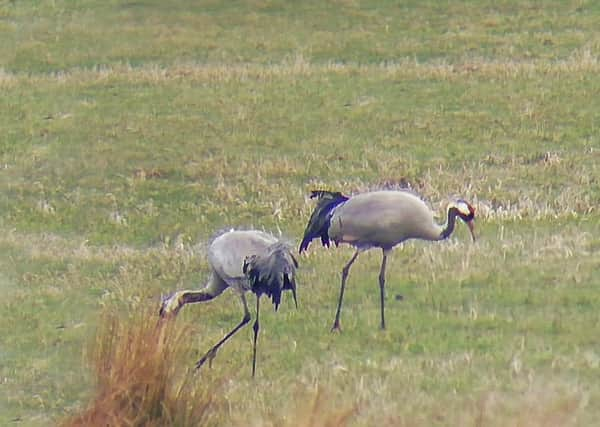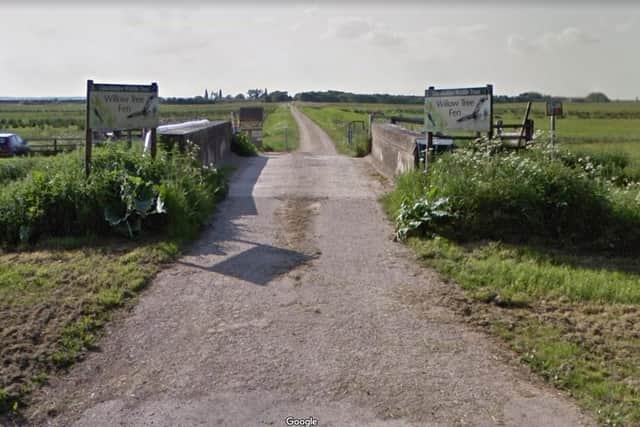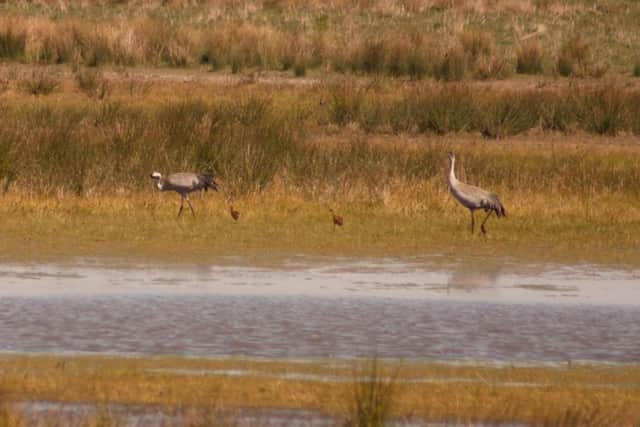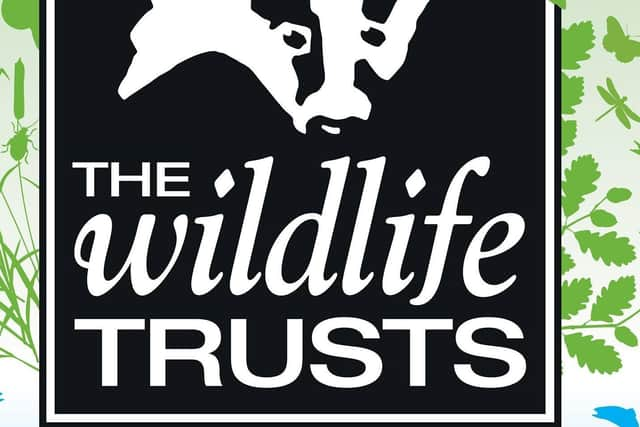Sad news as rare crane chicks die in cold weather at Peterborough area reserve


In 2020, cranes returned to breed in the Lincolnshire Fens for the first time in around 400 years. This year, they returned the Lincolnshire Wildlife Trust’s Willow Tree Fen nature reserve, near Spalding, in January.
Cranes form lifelong pair bonds and are very site loyal. The pair that nested at Willow Tree Fen were expected to return from their wintering grounds in February but arrived on Friday January 22. Lincolnshire Wildlife Trust therefore closed the site with immediate effect, as cranes need peace and quiet, and to be socially distanced from people and dogs.
Advertisement
Hide AdAdvertisement
Hide AdStaff and volunteers were delighted to see that two chicks had hatched and both parents were starting to feed the chicks and move the family further from the nest to forage for food. Sadly, that celebration has quickly turned to sadness with the news that both chicks have now died, believed to be at some point between lunch time on Bank Holiday Monday and Tuesday morning, according to the Trust’s experts.


The cause of the failure is not known but the disappearance of the chicks follows a period of very wet and cold weather over the Bank Holiday weekend and with newly hatched chicks, this, and a lack of available food, may have been the reason, says the Trust. Similarly, young cranes are very vulnerable in their first few weeks and may have fallen victim to a predator.
The Trust’s South Lincolnshire Warden John Oliver said: “Cranes are incredibly rare in the UK and we were delighted to welcome them back to the reserve for the second year in a row. However, it is not unusual for them to lose chicks and only about 10-20 per cent of crane chicks actually make it to adulthood.
“Whilst the whole team are incredibly disappointed, we understand that this is not unusual in the grand scheme of things and with such long lived birds, a survival rate of one out of every five chicks is more than enough to sustain the population. We are therefore confident that this is not the end of the story for cranes in Lincolnshire.”
Advertisement
Hide AdAdvertisement
Hide AdWillow Tree Fen is not large enough to safely accommodate visitors and cranes during the breeding season. This is because cranes need a large area in which to breed and are very susceptible to disturbance.


Head of Reserves Dave Bromwich said: “Following the loss of the chicks, we have taken the decision to keep the reserve closed for the time being. The adults are still on site and we are hopeful that there is still time for them to make a second breeding attempt. Our team of staff and volunteers will continue to monitor the situation and we will let people know more as soon as we can.”
FACT FILE
○ The last evidence of breeding in England was in 1542 but it is thought cranes might have last bred in Lincolnshire towards the end of the 16th Century, well over 400 years ago.
○ Cranes were extinct in the UK for about 400 years. The first breeding pair in the UK bred in Norfolk in 1981 and cranes have bred in the UK every year since.


Advertisement
Hide AdAdvertisement
Hide Ad○ The latest crane survey has revealed a record 60 breeding pairs in 2020, with 23 chicks successfully fledged, bringing the total population to an estimate of more than 200 birds.
○ In 2019, cranes were breeding in Norfolk, Suffolk, Cambridgeshire, Yorkshire, East Scotland; alongside breeding birds from a reintroduction scheme in Somerset that has now also spread to Wiltshire, Oxfordshire and Gloucestershire.
○ Cranes first bred again in Lincolnshire in 2020, fledging one chick at the Trust’s Willow Tree Fen reserve.
○ They are the UK’s tallest bird, standing at 110-120cm, with a wingspan of 220-245cm. They are faithful partners, with pair-bonds apparently lifelong. Their bugling call is one of the loudest and most striking of all bird calls and can be heard up to three miles away.
Advertisement
Hide AdAdvertisement
Hide Ad○ Cranes live for up to 14 years. They do not breed until they are about four years old and breed in a wide range of wetland habitats including wet meadows, wet woodlands, swamps and reedbeds.
○ They need to be free from disturbance and if they are disturbed, they may well abandon a breeding attempt, particularly during the display and incubation stage.
○ Pairs usually lay two eggs, and in most years only raise one chick. The young leave the nest within a day, but they are fed by their parents for up to 10 weeks.